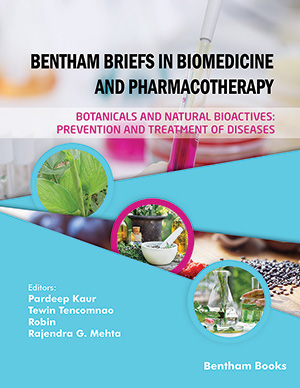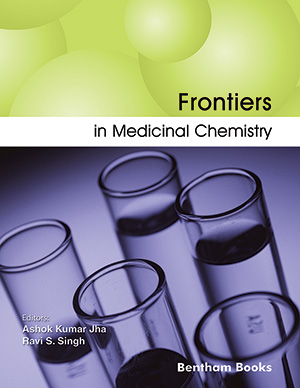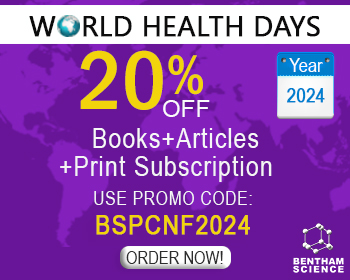Abstract
Glioblastoma Multiforme (GBM) is a debilitating type of brain cancer with a high mortality rate. Despite current treatment options such as surgery, radiotherapy, and the use of temozolomide and bevacizumab, it is considered incurable. Various methods, such as drug repositioning, have been used to increase the number of available treatments. Drug repositioning is the use of FDA-approved drugs to treat other diseases. This is possible because the drugs used for this purpose have polypharmacological effects. This means that these medications can bind to multiple targets, resulting in multiple mechanisms of action. Antipsychotics are one type of drug used to treat GBM. Antipsychotics are a broad class of drugs that can be further subdivided into typical and atypical classes. Typical antipsychotics include chlorpromazine, trifluoperazine, and pimozide. This class of antipsychotics was developed early on and primarily works on dopamine D2 receptors, though it can also work on others. Olanzapine and Quetiapine are examples of atypical antipsychotics, a category that was created later. These medications have a high affinity for serotonin receptors such as 5- HT2, but they can also act on dopamine and H1 receptors. Antipsychotic medications, in the case of GBM, also have other effects that can affect multiple pathways due to their polypharmacological effects. These include NF-B suppression, cyclin deregulation, and -catenin phosphorylation, among others. This review will delve deeper into the polypharmacological, the multiple effects of antipsychotics in the treatment of GBM, and an outlook for the field's future progression.
Keywords: Antipsychotics, Polypharmacology, Glioblastoma multiforme, Temozolomide, Bevacizumab, Brain cancer.
[http://dx.doi.org/10.1073/pnas.97.12.6242] [PMID: 10841526]
[http://dx.doi.org/10.1101/gad.891601] [PMID: 11390353]
[http://dx.doi.org/10.1038/ncpneuro0289]
[http://dx.doi.org/10.1007/s00005-012-0203-0] [PMID: 23224339]
[http://dx.doi.org/10.1007/s00401-005-0991-y] [PMID: 15685439]
[http://dx.doi.org/10.1016/j.jocn.2009.09.004] [PMID: 20167494]
[http://dx.doi.org/10.1155/2012/878425] [PMID: 22530127]
[http://dx.doi.org/10.3171/2018.12.JNS182558] [PMID: 30835701]
[http://dx.doi.org/10.3389/fimmu.2020.603911] [PMID: 33767690]
[http://dx.doi.org/10.1093/neuonc/4.4.278] [PMID: 12356358]
[http://dx.doi.org/10.1007/s00401-007-0243-4] [PMID: 17618441]
[http://dx.doi.org/10.1056/NEJMra0708126] [PMID: 18669428]
[http://dx.doi.org/10.1016/j.soncn.2018.10.001] [PMID: 30392758]
[http://dx.doi.org/10.1200/JCO.2016.70.7562] [PMID: 27893327]
[http://dx.doi.org/10.6004/jnccn.2020.0052] [PMID: 33152694]
[http://dx.doi.org/10.1016/j.canlet.2020.10.050] [PMID: 33166616]
[http://dx.doi.org/10.1038/s41571-022-00623-3] [PMID: 35322237]
[http://dx.doi.org/10.1016/S1470-2045(06)70665-9] [PMID: 16648043]
[http://dx.doi.org/10.1007/s11060-020-03607-4] [PMID: 33215345]
[http://dx.doi.org/10.1016/S1470-2045(09)70025-7] [PMID: 19269895]
[http://dx.doi.org/10.1016/S1470-2045(12)70265-6] [PMID: 22877848]
[http://dx.doi.org/10.1007/s00701-014-2073-1] [PMID: 24792966]
[http://dx.doi.org/10.1200/JCO.21.02036] [PMID: 34898238]
[http://dx.doi.org/10.1056/NEJMoa1611977] [PMID: 28296618]
[http://dx.doi.org/10.1093/neuonc/noz150] [PMID: 31675094]
[http://dx.doi.org/10.2165/00003088-200645090-00002] [PMID: 16928151]
[http://dx.doi.org/10.1200/JCO.2006.09.9861] [PMID: 17538176]
[http://dx.doi.org/10.1038/nrd2368] [PMID: 17667956]
[http://dx.doi.org/10.1007/s00228-009-0714-8] [PMID: 19727692]
[http://dx.doi.org/10.1038/nrc1889] [PMID: 16723989]
[http://dx.doi.org/10.1158/0008-5472.CAN-06-3126] [PMID: 16990346]
[http://dx.doi.org/10.1016/j.cell.2012.03.009] [PMID: 22464322]
[http://dx.doi.org/10.1038/nrd1468] [PMID: 15286734]
[http://dx.doi.org/10.3390/v12091058] [PMID: 32972027]
[http://dx.doi.org/10.3389/fphar.2018.00218] [PMID: 29615902]
[http://dx.doi.org/10.3892/ol.2016.4074] [PMID: 26893731]
[http://dx.doi.org/10.1002/cncr.21574] [PMID: 16288491]
[http://dx.doi.org/10.1016/j.schres.2011.02.018] [PMID: 21458957]
[http://dx.doi.org/10.1017/S204579602000044X] [PMID: 32460950]
[http://dx.doi.org/10.3390/ijms19103105] [PMID: 30309037]
[http://dx.doi.org/10.1093/carcin/bgt169] [PMID: 23689352]
[http://dx.doi.org/10.1016/j.semcancer.2020.03.011] [PMID: 32437876]
[http://dx.doi.org/10.1038/nbt.2786] [PMID: 24406927]
[http://dx.doi.org/10.1016/j.schres.2017.08.065] [PMID: 28943096]
[http://dx.doi.org/10.3390/biomedicines9121785] [PMID: 34944601]
[http://dx.doi.org/10.1111/j.1600-0447.1992.tb10325.x] [PMID: 1351334]
[http://dx.doi.org/10.1186/s12904-020-00559-4] [PMID: 32321488]
[http://dx.doi.org/10.1038/sj.npp.1300603] [PMID: 15702141]
[http://dx.doi.org/10.1016/j.canlet.2021.12.014] [PMID: 34923043]
[http://dx.doi.org/10.3389/fphar.2019.01262] [PMID: 31695618]
[http://dx.doi.org/10.18632/oncotarget.1801] [PMID: 24658464]
[http://dx.doi.org/10.1111/cns.13127] [PMID: 30955240]
[http://dx.doi.org/10.1007/s00213-009-1639-8] [PMID: 19688201]
[http://dx.doi.org/10.1007/s11060-014-1688-7] [PMID: 25524815]
[http://dx.doi.org/10.3858/emm.2010.42.5.041] [PMID: 20368687]
[http://dx.doi.org/10.1186/s13046-021-02144-w] [PMID: 34740374]
[http://dx.doi.org/10.18632/oncotarget.17247] [PMID: 28455961]
[http://dx.doi.org/10.3389/fonc.2021.635472] [PMID: 33718225]
[http://dx.doi.org/10.18632/oncotarget.16400] [PMID: 28415586]
[http://dx.doi.org/10.1186/s13045-017-0471-6] [PMID: 28476164]
[http://dx.doi.org/10.1038/nrd2926] [PMID: 19644473]
[PMID: 14974020]
[http://dx.doi.org/10.1038/sj.clpt.6100069] [PMID: 17235331]
[http://dx.doi.org/10.1002/jcb.26848] [PMID: 29663486]
[http://dx.doi.org/10.1097/NEN.0000000000000126] [PMID: 25289889]
[http://dx.doi.org/10.3390/ijms21030765] [PMID: 31991573]
[http://dx.doi.org/10.1038/s41419-017-0253-7] [PMID: 29463791]
[http://dx.doi.org/10.1016/j.ejmech.2018.03.055] [PMID: 29614416]
[http://dx.doi.org/10.3109/09687688209065434] [PMID: 6129563]
[http://dx.doi.org/10.1016/j.ccell.2016.05.002] [PMID: 27300435]
[http://dx.doi.org/10.1073/pnas.1920154117]
[http://dx.doi.org/10.1158/1078-0432.CCR-11-0767] [PMID: 22512979]
[http://dx.doi.org/10.1016/j.mrgentox.2007.05.011] [PMID: 17627868]
[http://dx.doi.org/10.2165/00003495-197612010-00001] [PMID: 824116]
[http://dx.doi.org/10.1034/j.1600-0773.2003.930106.x]
[http://dx.doi.org/10.3389/fpsyt.2019.00314] [PMID: 31214054]
[http://dx.doi.org/10.1016/j.pnpbp.2003.09.009] [PMID: 14642973]
[http://dx.doi.org/10.1097/00004714-200204000-00009] [PMID: 11910261]
[PMID: 7908055]
[http://dx.doi.org/10.1002/hipo.20938] [PMID: 21484935]
[http://dx.doi.org/10.1111/1440-1681.13049] [PMID: 30383889]
[http://dx.doi.org/10.1002/1097-0142(19820315)49:6<1178:AID-CNCR2820490619>3.0.CO;2-H] [PMID: 7059943]
[http://dx.doi.org/10.1016/j.semcancer.2019.10.007] [PMID: 31618686]
[http://dx.doi.org/10.3892/ijo.2015.3229] [PMID: 26549437]
[http://dx.doi.org/10.1093/neuonc/nov091] [PMID: 26032834]
[PMID: 17203225]
[PMID: 27775777]
[http://dx.doi.org/10.1159/000502562] [PMID: 31645049]
[http://dx.doi.org/10.1007/s12094-016-1509-x] [PMID: 27112938]
[PMID: 3466039]
[http://dx.doi.org/10.1155/2014/273060] [PMID: 24649390]
[http://dx.doi.org/10.1007/s00702-008-0105-9] [PMID: 18779922]
[http://dx.doi.org/10.1001/jama.2009.1549] [PMID: 19861668]
[http://dx.doi.org/10.1176/appi.ps.201100443] [PMID: 22910806]
[http://dx.doi.org/10.3390/pharmacy8020063] [PMID: 32276526]
[http://dx.doi.org/10.3389/fphar.2017.00298] [PMID: 28588497]
[http://dx.doi.org/10.1038/nm.4306] [PMID: 28388612]



























